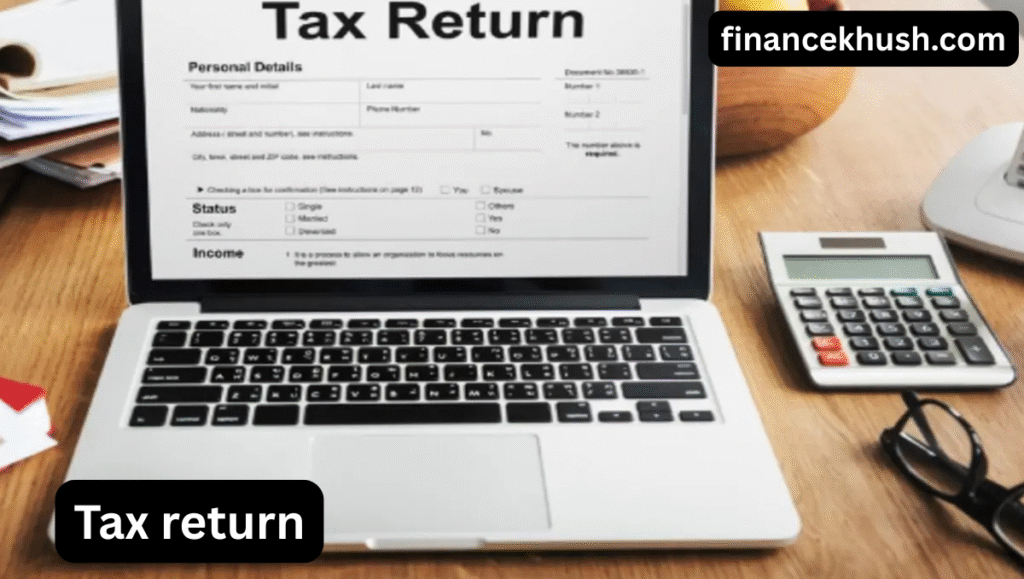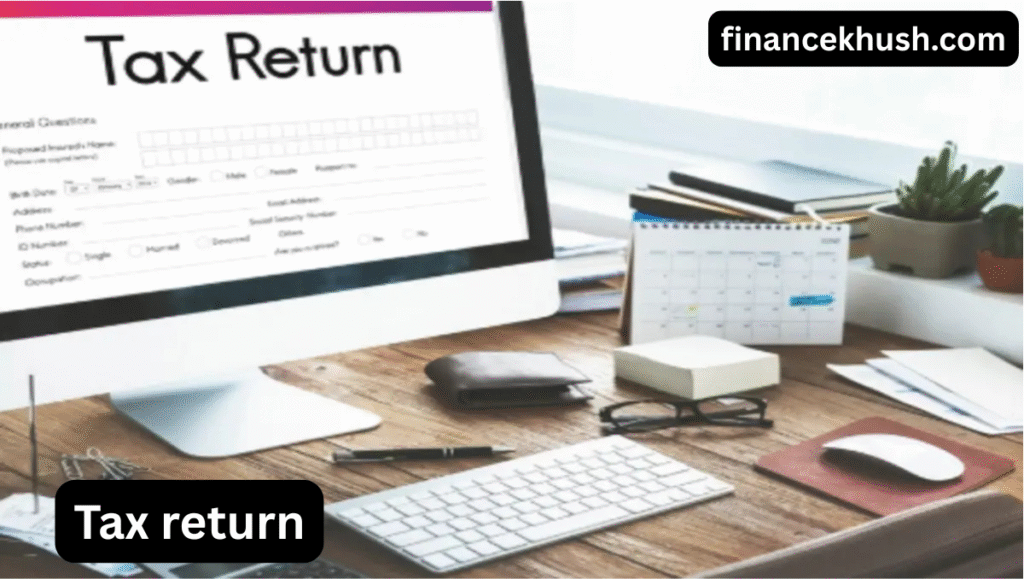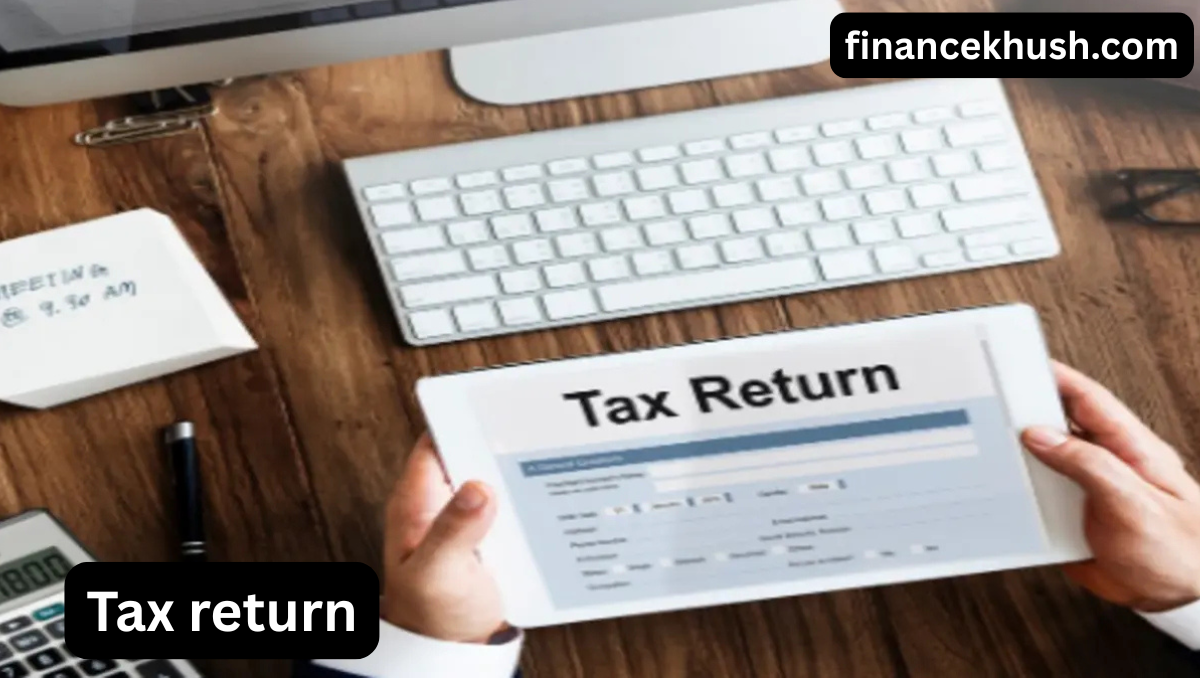Tax Return is a form you file with the government to report your income and taxes paid. It helps determine if you owe additional taxes or are entitled to a refund. Filing your tax return is important to stay compliant with tax laws. With the right documents and a little planning, the process can be easy and stress-free. Get it done on time to avoid penalties!
What is a Tax Return?
Simply put, a tax return is a form that you file with the government to report your income, expenses, and other relevant financial details. It’s the way the government determines how much tax you owe—or how much you should get back as a refund. Think of it as a report card on your finances for the year, except, instead of grades, you get a tax bill or a tax refund.
Why Do We File Tax Returns?
Filing tax returns is a way to calculate your tax obligations and settle your financial responsibilities with the government. It’s how the government makes sure everyone is paying their fair share based on their income and situation.
If you’re an employee, your employer probably deducts tax from your paycheck throughout the year, and filing a tax return helps you ensure that the right amount was taken out. If you’re a freelancer or run your own business, you might not have automatic deductions, and a tax return helps you figure out how much you need to pay.
When Should You File a Tax Return?
The deadline for filing a tax return varies depending on where you live, but in most places, the deadline falls on a specific date each year. For example, in the United States, the deadline is typically April 15th, although it can vary if that date falls on a weekend or holiday.
If you’re not sure when your deadline is, check with your local tax authority or the country’s revenue service website.
Who Needs to File a Tax Return?
While most people need to file a tax return, there are some exceptions. Generally, if you earned a certain amount of income during the year, you will need to file a tax return. The exact income threshold depends on your filing status (single, married, etc.), your age, and whether you are claimed as a dependent by someone else.
For example:
- Employees: If you’re employed and your income is above a certain threshold, you’ll likely need to file.
- Freelancers or Self-Employed Individuals: If you’re self-employed and earn more than a certain amount, you will need to file a tax return.
- Retirees: Even retirees need to file if their income exceeds a set amount.
- Dependents: If you are claimed as a dependent, the rules are different, and you may or may not need to file.

If you’re unsure whether you need to file, it’s always a good idea to check with a tax professional.
How to File a Tax Return: A Step-by-Step Guide
Now that you know what a tax return is and why you need to file it, let’s break down the process of filing your tax return. Don’t worry, we’ll take it step-by-step!
1. Gather Your Documents
Before you can start filling out your tax return, you’ll need to gather the necessary documents. Some common forms include:
- W-2 (for employees): This form shows how much income you earned and how much tax was withheld during the year.
- 1099 (for freelancers and contractors): This form shows how much income you earned if you were paid as an independent contractor.
- Receipts for Expenses: If you’re self-employed, you can deduct business-related expenses, so keep track of your receipts for things like office supplies, travel, and equipment.
- Bank Statements and Investment Documents: These can help you report any interest or dividend income.
Make sure you have all the documents that apply to your situation!
2. Choose Your Filing Method
There are a few different ways you can file your tax return:
- Online Tax Filing Software: The easiest and most popular option these days is to use online tax filing software like TurboTax, H&R Block, or TaxAct. These platforms guide you through the process, asking you questions about your income and deductions and filling out the forms for you.
- Hire a Tax Professional: If you have a more complicated tax situation (like owning a business or having significant investments), you might prefer to hire a tax professional to handle your filing. They’ll ensure everything is done correctly and help you find deductions you might miss on your own.
- Manual Filing: Some people still prefer to do things the old-fashioned way by filling out paper forms and mailing them in. This is an option, but it’s becoming less common, as online filing is quicker and more convenient.
3. Fill Out Your Tax Return
Whether you’re using software or filing manually, this is the part where you actually fill out the tax return. The software will prompt you for the necessary information, and if you’re doing it by hand, you’ll need to complete the required forms.
Be sure to double-check your information and enter everything accurately. Missing or incorrect information can delay your return or even cause penalties.
4. Check for Deductions and Credits
Deductions and credits are key to lowering the amount of tax you owe (or increasing your refund). Some common deductions and credits include:
- Standard Deduction: This is a fixed amount that reduces your taxable income. Most people take this deduction unless they have enough deductions to itemize them.
- Itemized Deductions: If you have significant expenses, such as mortgage interest, medical expenses, or charitable donations, you might choose to itemize your deductions instead of taking the standard deduction.
- Tax Credits: Credits reduce the amount of tax you owe directly, and there are several types, such as the Child Tax Credit, Earned Income Tax Credit, or education-related credits.
If you’re using tax software, it will automatically suggest deductions and credits based on your situation, but be sure to read through everything and confirm what applies to you.
5. Submit Your Tax Return
Once you’ve filled out your tax return and double-checked everything, it’s time to submit it. If you’re filing online, this usually just means clicking a button to submit your return electronically. If you’re mailing it in, you’ll need to send it to the appropriate tax office.
6. Pay or Receive Your Refund
Once your tax return is processed, the government will either issue you a refund (if you’ve overpaid during the year) or send you a bill for the amount you owe.
If you owe taxes, you can usually pay online or by mail. Make sure to pay by the deadline to avoid penalties or interest charges.
On the flip side, if you’re getting a refund, it will usually be sent directly to your bank account (if you provided your bank details). Most people receive their refunds within a few weeks of filing.

Common Mistakes to Avoid When Filing Your Tax Return
Filing your tax return can be tricky, but avoiding common mistakes can make the process smoother. Here are a few mistakes to keep in mind:
- Missing Forms or Documents: Make sure you have all of your income-related documents, like W-2s, 1099s, and receipts.
- Math Errors: Double-check your calculations, especially if you’re doing it manually.
- Incorrect Filing Status: Choosing the wrong filing status can affect your tax rate and refund. Be sure to select the one that fits your situation best.
- Not Claiming All Eligible Deductions or Credits: If you miss out on deductions or credits, you might pay more taxes than you need to. Review all available options and use tax software to ensure you don’t miss anything.
- Filing Late: If you miss the tax deadline, you could face penalties and interest. Always try to file on time, or request an extension if necessary.
Conclusion
Filing a tax return doesn’t have to be complicated. By staying organized, gathering the necessary documents, and choosing the right filing method, you can ensure the process goes smoothly. Don’t forget to check for deductions and credits, and if you’re ever unsure, don’t hesitate to reach out to a tax professional.
At the end of the day, taxes are a part of life, but they don’t have to be stressful. With a little planning and knowledge, you’ll be well-equipped to handle your tax return like a pro. Happy filing!
Related post
Faq’s
1. What is a tax return and why do I need to file it?
A tax return is a form you submit to the government that shows how much money you made during the year and how much tax you’ve already paid. The government uses this information to figure out if you owe more money or if you get a tax refund. It’s important to file so you stay compliant with tax laws and avoid any penalties.
2. When is the deadline for filing my tax return?
The deadline to file your tax return is usually April 15th, but it can vary based on where you live and any special circumstances. If you need more time, you can request an extension, but you still need to pay any owed taxes by the original deadline to avoid penalties.
3. Who needs to file a tax return?
If you earned a certain amount of income during the year, you will need to file a tax return. This applies to employees, freelancers, and business owners. Even retirees or students may need to file, depending on their income. If you’re unsure, it’s always a good idea to check with a tax professional.
4. What documents do I need to file my tax return?
You’ll need to gather documents like your W-2 (if you’re employed), 1099 (if you’re self-employed), and any other paperwork showing your income and expenses. Don’t forget receipts for deductible expenses like medical bills or charitable donations. The more organized you are, the easier filing will be!
5. How do I know if I’ll get a tax refund or owe money?
If the government has taken more tax from your paycheck throughout the year than you actually owe, you’ll get a refund. If not enough was taken out, you may owe taxes. Tax software can help estimate this, or you can calculate it based on your income, deductions, and credits.
6. Can I file my taxes online or do I need to hire someone?
You can absolutely file your taxes online using tax software like TurboTax or H&R Block, which is easy and quick. If your tax situation is complicated (like owning a business or having multiple income sources), hiring a tax professional might be a good idea. They’ll make sure everything’s filed correctly and help you find deductions you might miss.

2 thoughts on “How to Get the Most From Your Tax Return In 2025”